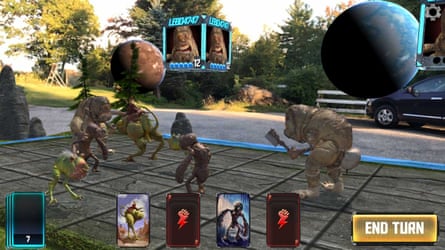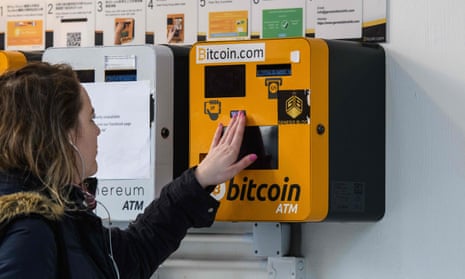Echo and Home will start to talk back
Both of the major smart home platforms have a long-running problem with “discoverability”: it’s very hard to let users know what their devices can do, particularly if they’re always improving thanks to rapid software updates.
Amazon and Google are constantly experimenting with ways to get around this, but so far they have been timid. Amazon sends a weekly email, while Google includes some tips in its app. Expect to see them be bolder, particularly as powerful rivals such as Apple appear on the scene with worse AI but better sound.
So don’t be surprised if your Google Home or Amazon Echo begin to talk back, rather than simply following commands. They might ask for a bit more contextual information, to better carry out the role you’ve assigned them, or they might suggest something that you hadn’t even thought to ask them, based on your use patterns (and, in Google’s case, near-omniscient knowledge of your movements and habits).
Actual conversations will probably be rare for the core assistants, though. Both companies know that they need to avoid irritating their users and are loath to insert themselves too forcefully into their lives.
But with both platforms also open to third-party developers, we can expect to see an evolution of the sort of chatbot-based narrative experiences with which organisations such as the BBC are already experimenting. Want to have Alexa acting as your on-tap dungeon master for a weekly pen-and-paper role playing game? OK, you’ll probably have to wait a bit longer for that one.

Facebook screws up the 2018 US midterm elections
There is not really any good outcome for Facebook in 2018 and the company seems to know it. It’s stuck between two competing imperatives and it’s hard to see how it can chart a course between Scylla and Charybdis.
On the one hand, the company has to demonstrate conclusively that it has managed to protect the US against further Russian interference. That’s an almost existential concern for Facebook, at this point: the investigation into the Internet Research Agency’s actions on the site has blossomed into the worst press it has ever had and already made 2017 hell for the company.
That defensive need goes further than just Russia, though. Facebook still has a problem with “fake news” and its efforts to stymie the spread of hoaxes, bad reporting and deliberate propaganda haven’t worked. The rot has got so bad that Facebook is experimenting with simply deprioritising news full stop, trialling a news feed in six countries around the world that removes news posts to a secondary column, the “explore feed”.
But commercially, Facebook still needs to show it can swing elections. It’s reaching out to elected officials and candidates around the world – even running a special elections page, walking them through the process of buying an advert, optimising it for organic engagement and getting “honest, real-time” voter feedback.
It’s easy to see Facebook managing to achieve the worst of both worlds. In an effort to guard against misinformation, it has already started to promise new restrictions on political adverts, which could hurt the bottom line when it comes to creaming a portion of the enormous US electoral ad spend. But those restrictions won’t be enough to prevent a determined campaign – nor could they, without completely changing the nature of Facebook’s site.
Pay to play
The world of videogames saw a long-overdue backlash in 2017 against the concept of “loot boxes”, slot-machine style collections of virtual items that gamers can buy for real money to improve their characters. With tales of children spending hundreds of pounds on new players for Fifa and the latest Star Wars game launching to terrible reviews for its “relentless” money-grabbing, the trend looks as if it might be dialled back in the coming year.
But the economics behind it haven’t changed. Making serious money from games, particularly casual and mobile games, remains a prospect of identifying “whales” – players who will spend hundreds or thousands of pounds on your game in order to be the best there is – and milking every last cent from them, even if the experience hurts the normal players who just want to have fun without pulling their wallet out.
So what’s next? Paying those normal players to stick around, of course. After all, no one is going to spend a thousand pounds on new weapons and armour if there isn’t anyone to shoot them with. And people will do silly things to earn money, even if it’s just pennies an hour.
Crycash, a cryptocurrency launched in partnership with major developers Crytek, offers one mechanism to do just that, providing a “decentralised ecosystem of custom-tailored products providing gamers a means to monetise their game time”. The project suggests that users could be rewarded for achieving simple goals in-game (say, 3 crycash for 100 kills); they could then use that money to buy in-game items or sell it to the whales to cash out.

Your bus driver was trained in Grand Theft Auto – and is a computer
Games are fertile ground for training advanced artificial intelligences. Unlike the real world, they can be run on fast-forward, reset instantly, and operated in vast numbers simultaneously. That’s how a system such as DeepMind’s AlphaZero was able to learn how to play chess, Go and shogi to better-than-world-class standard in a matter of hours: by “playing” an inconceivable number of games against itself, improving as it did so, until it had more experience in each game than all the world’s grandmasters combined.
The next stage for many AI practitioners is to move from the table top to videogames. More advanced games can be used, not to improve the basic science of how to make a strong neural network, but to take advantage of the same elements of simulation that make them fun for your typical player: the handling of a car on the road in Grand Theft Auto, for instance, or the physics engine that makes bodies fly realistically in a typical first-person shooter.
Self-driving cars have been trained on the open world driving game Grand Theft Auto for more than a year now, learning to label different objects in a scene and drive a car according to the rules of the road.
But recent software releases from major gaming tech companies such as Unity and OpenAI look likely to accelerate that trend. Just remember to remove the bit of the game that rewards you for killstreaks before training your AI, OK?

‘Transparency reports’ will get longer, and still be ignored
Social networks have faced awkward sessions in front of legislatures around the world, as they try to get to grips with the extent of Russian misinformation operations aimed at disrupting democratic elections in the west.
While the prospect of MPs and congressional representatives shouting at executives from Twitter and Facebook is always a juicy one, the real meat of the testimony comes in the data those two companies have been forced to hand over to investigative committees, from which we’ve received an insight into the practices of both the “professional trolls” Russia employed to disrupt the votes and the social media firms themselves.
But this ad-hoc information sharing won’t last and tech has already shown that it knows the best way to bury bad news is in plain sight. Following the Snowden revelations, when the world learned the extent of the US national security apparatus and how it was applied to the tech world, companies including Twitter, Apple and Google began issuing annual transparency reports.
They list how many requests for information the companies have received from law enforcement and which of them they’ve acquiesced to, turning a sporadic drip of information into an annual torrent.
So don’t be surprised if the next load of these reports begins to include information about state-sponsored political manipulation as a new chapter. Where better to bury bad news than in your annual bad news newsletter?
Bitcoin crashes… to higher than it was when people started calling it a bubble
Making predictions about cryptocurrencies is a fool’s game. The first time the Guardian noted bitcoin was in a bubble was June 2011, when the currency had just crashed from a high of $30. As I write, it’s worth $16,500. Who knows what it will be when you read this?
Still. At this point, you’d be a fool if you didn’t expect some sort of crash in the crypto market in 2018. When people are remortgaging houses to invest in something they saw on a tube advert, that’s not a great sign.
The final point in any speculative boom is always the arrival of the “dumb money”, because they’re the investors who put in more than they can afford to lose and get flighty at the downturns. And because this speculative bubble isn’t just bitcoin, instead involving a spread of investments across a number of cryptocurrencies including ethereum, monero and a host of bitcoin forks, that eventual crash could be sparked by any one of about 20 markets.
So the question isn’t whether there will be a crash, but what comes next. With the amount of attention and investment cryptocurrencies have received, and the baked-in assumption of wild volatility in price, it’s hard to see a crash killing the sector. That’s partially because none of the previous crashes has managed to do it, demonstrating a remarkable resilience alongside the huge price swings. And it’s partially because, well, cryptocurrencies are useful. Sure, most of that use is buying drugs and paying cybercriminals, but that keeps demand up high enough that it never quite bottoms out. Many have called the death of bitcoin and many have been wrong.

YouTube starts paying attention to the far right
The world’s largest broadcaster has started to wake up to the fact that time and again, it is cited as part of the “radicalisation pathway” that turns young men from bedroom shut-ins to mass murderers. For a long time, the site has removed content that includes explicit calls to action or violent hate speech. But it’s taken a softer touch with content that doesn’t breach those rules, but may lead vulnerable audiences to draw their own violent conclusions or seek out stronger content off-site.
In late 2017, it began to take serious action, acting for the first time to remove swaths of material that had previously fallen on the right side of that line – just. Videos featuring sermons by Anwar al-Awlaki, the radical preacher once known as the “YouTube Islamist”, were removed in their entirety. More than 50,000 were taken offline as a result, with most of those left up being about Awlaki, but not authored by him.
But Islamists are not the only extremists on YouTube. The site has also been blamed for its role in the radicalisation of neofascists and white supremacists. Just as with Islamic extremism, the most egregious content gets removed, but the pathway remains.
The situation seems unsustainable, however. If content can be removed because it contributes to radicalisation, even if it doesn’t directly contravene the site’s guidelines, then how can one class of radicalisation be treated differently from another?

AR’s less-than-killer app
Augmented reality currently feels like a hammer in search of a nail. The tech, which received a big boost with the release of iOS 11 in September 2017, lets developers overlay virtual items on top of the real world. You can hold your phone up to the night sky and see constellations on its screen or wave it around while playing Pokémon Go and watch Pikachu jump about like he’s really in the park.
But currently, the tech is floating in novelty territory and it looks like it will be hard to rescue that without something major coming to save it. Thankfully, unlike its sister technology virtual reality, AR doesn’t require any special hardware to use – just a relatively new phone running the latest operating system – which means that it doesn’t need to convince people to spend tens or hundreds of pounds on new gear.
Instead, AR just needs something fun or useful enough to keep people remembering that it’s a thing, at least until something actually good comes along. There are a lot of developers vying to fill that niche, but the ones with the best potential take something that people are already happy doing fairly physically and improve it. That means no to AR Twitter timelines and yes to AR boardgames.
There are already a few experiments that point the way, from AR-powered table-top war game The Machines to weird Star Wars-inspired chess variant HoloGrid: Monster Battle. None has quite nailed it, but they all demonstrate the potential. Imagine being able to sit at a real table with a real board and play a virtual game with friends and loved ones around the world. It would be… well, sort of crap, but at least it might be memorable.

Comments (…)
Sign in or create your Guardian account to join the discussion